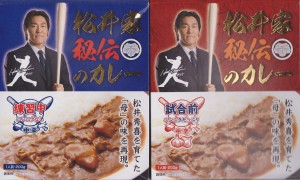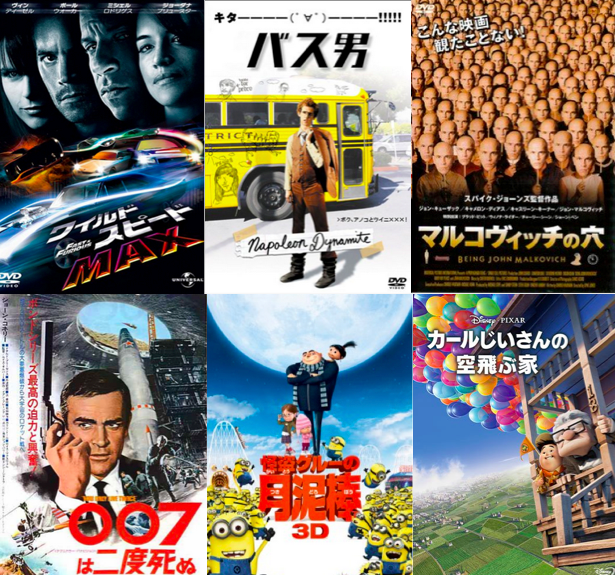Job: Japanese Support CSR at PAI and Wizards of the Coast
————————————————————————————————————
Position: Japanese Support CSR
Location: Field
Type: Full-time
Overview:
Suits Optional…
…Brains Required!!
PAI and Wizards of the Coast, a subsidiary of Hasbro, Inc., and the world’s largest publisher of adventure games, including Magic: The Gathering® Trading Card Game and Dungeons & Dragons® Roleplaying Games has an exciting opportunity for a Japanese Support CSR to join the PAI team. Read More
Let’s Talk Japan, Episode 18 – Aikido
Let’s Talk Japan is a monthly, interview format podcast covering a wide range of Japan-related topics. Host Nick Harling (Mie-ken, 2001-03) lived in Japan from 2001 until 2005, including two great years as a JET Program participant in Mie-Ken. He practices law in Washington, D.C., and lives with his wife who patiently listens to him talk about Japan . . . a lot.
In this episode, I speak with Michael Veltri, the owner and chief instructor at DC Aikido in Washington, DC. Together we discuss the history, philosophy and benefits of Aikido.
Enjoy!
Nick
If you have not already done so, be sure to “Like” the podcast on Facebook, and follow the podcast on Twitter @letstalkjapan. Additionally, please consider leaving a positive rating and/or review in iTunes.
Around Japan in 47 Curries: Mrs. Matsui’s Ishikawa Slugger Sauce
Tom Baker (Chiba, 1989-91) is writing a 47-part series of posts on his Tokyo Tom Baker blog, in which he samples and comments on a curry from a different prefecture each time. Here’s an excerpt from his 16th installment, in which he tastes a facsimile of the home cooking that the most famous person from Ishikawa Prefecture grew up on.
Professional baseball player Hideki “Godzilla” Matsui was born in 1974 in the town of Negari, in Ishikawa Prefecture. Most mothers want their sons to grow up to be big and strong, but few succeed as dramatically Mrs. Matsui did. As a kid, he was already such a powerful right-handed hitter that the other boys wouldn’t play with him unless he switched to batting left-handed. He did – and still went on to become one of the top batters in the world.
There must have been something in his mom’s cooking. Maybe it was her curry…
Now that Godzilla is retired, he has taken to hawking a brand of curry called “Matsui-ke Hiden no Kare,” or the Matsui family’s secret curry. In a clever bit of marketing, there is garlic-free “renshu-chu” curry for “during training” and also “shiai-mae” curry, which is loaded with garlic, for “before the game.”
Read the full entry here.
JQ Magazine: The Steady Riser – A Conversation with Tokyo Musician Nelson Babin-Coy

“The Japanese market is a very unique market; it’s very closed. It is kind of frustrating when I try to introduce Western ideals in my music or introduce how I feel live music should be enjoyed at gigs or live venues. If you want to dance, dance. If you want to move, move.” (Lisa (paint with stars) www.paintwithstars.com)
By Sheila Burt (Toyama-ken, 20010-12) for JQ magazine. Sheila recently returned to America after living in Japan for three years (two years in Namerikawa with JET and one year at a private school in Ehime-ken). She is currently looking for a job and welcomes all leads. View more of her work at www.sheilaburt.com.
The first time Tokyo-based musician Nelson Babin-Coy visited Japan, he was a 15-year-old high school student from the suburbs of L.A. who knew next to nothing about Japan. Interested in learning more about Japanese music during his stay in Gunma Prefecture, he started listening to what other teenagers his age were into, including the idol group Morning Musume. Yet when he first heard one of the band’s songs, he cringed a bit. “I wasn’t disgusted, but I was like, ‘This is music in Japan?’,” he laughs.
Thankfully, his host sister introduced him to the Battle Royale theme song by Dragon Ash, and he was hooked. The two weeks Babin-Coy spent in Gunma were enough to give him a new dream to follow. He wanted to live in Japan, though he had yet to figure out the how and what to do.
“I love Japanese music and lyrics,” he says. “I think Japanese artists are more artistic in the way they form their stories.”
Now 28, Babin-Coy is a rising singer-songwriter who primarily sings in Japanese and works with several native artists trying to break into the Western market. He has toured the mainland three times with his band, nothing ever lasts (currently on hiatus).
WIT Life #257: 今年の漢字
WIT Life is a periodic series written by professional Writer/Interpreter/Translator Stacy Smith (Kumamoto-ken CIR, 2000-03). She starts her day by watching Fujisankei’s newscast in Japanese, and here she shares some of the interesting tidbits and trends along with her own observations.
It was recently announced that the kanji representing 2013 would be 輪 (rin or wa). It means ring, circle, or wheel, and refers to different aspects that have converged this year. This was the most popular submission in the public contest run by the Japan Kanji Aptitude Testing Foundation, and there were several explanations for why. One idea came from the five rings symbolizing the Olympics, in regard to the September announcement that Tokyo would host the Summer Olympics in 2020. Another was the coming together of citizens in a circle of recovery from the Great East Japan Earthquake (Thanks to this rebuilding, construction and real estate related stocks have been booming on the Nikkei Stock Average). Yet another interpretation was the private/public cooperation that led to the recent registration of Mt. Fuji on the World Heritage List. 輪 received 9518 votes, and second-place  楽 (raku) which received 8562 votes referred to the Tohoku Rakuten (楽天) Golden Eagles’ victory in the Nippon Series baseball championship.
楽 (raku) which received 8562 votes referred to the Tohoku Rakuten (楽天) Golden Eagles’ victory in the Nippon Series baseball championship.
For those who are interested in kanji and Japanese calligraphy, I would highly recommend the current exhibit at the Metropolitan Museum of Art entitled Brush Writing in the Arts of Japan. It was interesting to learn about Read More
Job: Account Manager at Boston Technologies (MA)
————————————————————————————————————
Position: Japanese Speaking Account Manager
Posted By: Boston Technologies
Location: Boston, MA
Overview:
The Account Manager provides new business case management, customer service to assigned accounts, develops key relationships, supports client retention, and new business development’ efforts. S/he interfaces with Sales, Deployment & Configuration, and Client Services to improve new client on-boarding process and post sales service experience. S/he also acts as client liaison and advocate to ensure that client issues and needs are being handled efficiently within Boston Technologies. Read More
Job: Fellowship Opportunity – Asia Pacific Leadership Program
————————————————————————————————————
Fellowship Opportunity – Asia Pacific Leadership Program (APLP)
The Asia Pacific Leadership Program (APLP) is currently accepting fellowship applications for the 2013-2014 academic year. APLP is a signature program of the East-West Center, a hub for cooperative study, research, and dialogue focused on the Asia Pacific region. APLP links advanced and interdisciplinary analysis of emergent regional issues with experiential leadership learning.
For more information about the program or application instructions, please visit APLP’s website at: www.eastwestcenter.org/aplp. Information regarding scholarships, curriculum, field study options and the wider East-West Center community can also be found on the website. Should you have any questions, contact APLP staff at APLP @ eastwestcenter.org
Michelle Lynn Dinh (Shimane-ken, Chibu-mura, 2010–13) is an editor and writer for RocketNews24, a Japan-based site dedicated to bringing fun and quirky news from Asia to English speaking audiences.
Hollywood films are popular around the world and Japan gets its fair share of dubbed and subtitled blockbusters. But sometimes things get a little mixed up when changing words from English to Japanese. This gives rise to translated titles that come in a wide range of strange from unintended sexual innuendos to spoilertastic summaries.
Let’s take a look at 13 weird Japanese movie titles that make you wonder what the translators were thinking.
Job: CUNY Queens College- International Student Advisor, The English Language Institute (NY)
Posted by Jayme Tsutsuse (Kyoto-fu, 2013-Present), organizer of Cross-Cultural Kansai. Click here to join the JETwit Jobs Google Group and receive job listings even sooner by email.
————————————————————————————————————
Position: International Student Advisor
Posted by: CUNY Queens College
Location: Queens, New York
Type: full-time, Monday-Friday 9:00am-5:00pm
Overview:
The English Language Institute (ELI) at Queens College (QC) is a comprehensive academic program for learning English as a second language. The ELIs International Student Advisors primary responsibilities are to ensure the ELIs compliance with the United States Code of Federal Regulations related to non-immigrant students and to advise prospective, new and continuing international students. The position reports to the Executive Director of the ELI.
Job: International Education positions in India at International Knowledge Center (Bangalore)
Posted by Jayme Tsutsuse (Kyoto-fu, 2013-Present), organizer of Cross-Cultural Kansai. Click here to join the JETwit Jobs Google Group and receive job listings even sooner by email.
————————————————————————————————————
Position: University Counselor, Recruiting Coordinator, and International Programs Manager
Posted by: The International Knowledge Center
Location: Bangalore, India
University Counselor:
The primary role of the University Counselor will be to guide students towards the right-fit program and university for their overseas study; this will include interactions with parents and local high school administration as well as involvement in larger-scale recruiting programs. The University Counselor should be committed to staying current with international recruiting trends, partner university needs, and education culture in India.
The 17th Japanese Film Festival in Australia wraps up after a mammoth tour around Australia. Eden Law (Fukushima JET 2010-2011, current member of JETAA NSW reviews some of the films that were on offer.

Is this organically-made?
This is a very Japanese melodrama, filled with messages about perseverance and dedication, themes that were common to many of this year’s film festival selection. The story of an apple farmer’s struggles to grow viable organic crops, it is actually based on a true story of Akinori Kimura and his wife Mieko Kimura, first popularized in a tv special and then a book (by the catchy title of “Kiseki no Ringo (Zettai Fukano) oh Kutsugaeshita Noka・ Akinori Kimura no Kiroku”) written about them by Takuji Ishikawa.
Son of an Aomori apple farming family, from an early age, Kimura (Sadao Abe) is shown to be an inveterate tinkerer, taking apart things to see how they work (although not so proficient on putting them back together again). Dissatisfied with the conservative and incurious mentality of his home town, he leaves for Tokyo for greater and better things, only to be ordered back to attend his own wedding arrangements to the local beauty, Mieko (Miho Kanno). Apparently this was enough to get Kimura to ditch his entire career in the city and settle down without complaints, to do the one thing he had scorned – apple farming, no doubt delighting his parents that their son is finally settling down and cleaving to his appropriate destiny. But then Kimura discovers that his young wife has a severe allergic reaction to all the chemical pesticides and fertilizers. So turning that curious tinker’s mind of his to the problem, he embarks on what will be a long and hard road to perfecting the perfect organic apple.
While the suffering and tribulations the Kimuras (they ended up having three daughters) endure are harsh, at times it seems so over the top that it veers closely into melodramatic territory. It’s hard to believe that the very young children shared in the suffering of their parents, for example, a sentiment echoed by Kimura’s best friend who at one point berate him severely for neglecting his daughter’s needs in a “selfish” pursuit of his dream. They have no electricity, nothing to eat, and Kimura has to take odd jobs in Tokyo to keep the family going, before losing it in a mugging – one disaster upon another. Abe’s portrayal of Kimura is also problematic, as the actor, whose cheerful face, while expressive enough to show a measure of unease beneath that ever-present smile, sometimes hits the wrong note and fails to convey the appropriate emotion that particular scenes call for. In these instances, Abe just seems at best a slightly confused person who knows that something is wrong but not entirely sure what, thereby lessening the emotional impact. It does admittedly, bring an extra level of tragedy to Kanno’s role as the long-suffering wife, who for whatever reason, continuously supports her husband through thick and thin; her acting range is decidedly broader and richer in depth. Tsutomu Yamazaki, as the wise father-in-law, in contrast, radiates such presence and dignity without having to do very much that he threatens to steal every scene he’s in. He’s the kind of strong, silent parental type that everyone wishes they have in real life.
However, it’s undeniable that it is quite a compelling story, and the Kimuras are such sympathetic characters that you can’t help but become invested in their struggles. The locations are extraordinarily beautiful, with Mt Iwaki in the background. And while I can’t be sure, I think the dialogue were spoken in Tohoku dialect, a delightful detail since I had lived in Tohoku for a time, and it certainly reinforces the bucolic country setting. Chosen to close the 17th Japanese Film Festival, it is an appropriate choice that echoes the festival’s theme of discipline, endurance and cooperation.
Fruits of Faith (Kiseki no Ringo) by Yoshihiro Nakamura, released June 8 2013 in Japan, starring Sadao Abe, Miho Kanno, Hiroyuki Ikeuchi, Takashi Sasano, Masato Ibu, Mieko Harada and Tsutomu Yamazaki.
JQ Magazine: JQ&A with Manga Translator Zack Davisson on Shigeru Mizuki

“All of JET is fond memories for me. I loved it. Kansai was the perfect area. Nara, Osaka, and Kyoto were all in easy reach so I had the best of everything. I lived in ancient and traditional Japan, but had wild and modern Japan nearby anytime I wanted. I did everything I could possibly do, went everywhere, tried everything—it changed my life.” (Courtesy of Zack Davisson)
By Julio Perez Jr. (Kyoto-shi, 2011-13) for JQ magazine. A bibliophile, writer, translator, and graduate from Columbia University, Julio is currently seeking opportunities with publications in New York. You can follow his enthusiasm for Japan, literature, and board gaming on Twitter @brittlejules.
A scholar, author and translator of Japanese folklore and ghost stories, Zack Davisson (Nara-ken, 2001-04; Osaka-shi, 2004-06) joined the JET Program in 2001 with some basic Japanese knowledge and a strong desire to learn much more. After spending five years on the program, he remained in Japan to acquire a master’s degree in Japanese studies while writing freelance and translating for Osaka University.
The theme of Japanese ghosts running through Davisson’s writing and translation dovetails the interests of manga legend Shigeru Mizuki, who is famous for the classic series GeGeGe no Kitaro. Mizuki is equally well known in Japan for his autobiographical works about his experiences as a soldier during World War II. A great fan of Mizuki, Davisson now contributes to publisher Drawn and Quarterly’s English adaptations of Kitaro and is the translator of the first volume of Mizuki’s historical manga Showa 1926-1939: A History of Japan, released last month in North America.
In this exclusive, expansive interview, Davisson discusses his time on JET, the significance of Mizuki’s supernatural and historical works, and the unique methods and madness of manga translation.
How did you first become interested in learning the Japanese language, and how long have you been studying it? For aspiring translators who are still studying, do you have any advice about textbooks, programs, or techniques?
I actually became interested when I was about 10 years old and my mother took me to see Seven Samurai at a local art theater. I was hooked pretty early—if I you look at my class pictures from that time I am wearing ridiculous Japan t-shirts. I took Japanese in high school when it was offered as a foreign language, but there were only four of us in the class, so it was cancelled—no one was interested in learning Japanese back then. This was the ’80s, so there was no “Cool Japan.” That pretty much ended my language studies for a while.
Decades later when I went on JET, I was useless language-wise. I thought I knew more Japanese than I did, but really just the set phrases and greetings. I was determined to leave JET functionally bilingual, so I just studied as hard as I could from day one, eventually getting my master’s degree in Japan.
My only real advice for people is to go to Japan, and talk and read and practice as much as humanly possible. There is no substitute for immersion and experience. I always say I learned more Japanese at my local bar, the 100 Club, than I did doing my MA. Talk, talk, talk. Read, read, read. Use Japanese as a living language, don’t just study it as an abstract. And, of course, marry a Japanese person. That’s a huge advantage!
When and where were you posted for JET? Could you talk a bit about your time there and what you remember fondly?
I started JET in…I think 2001. Crazy to think it was more than 10 years ago, because it doesn’t feel that way. I was unusual in that I was a 5-year JET that worked in two prefectures. I did three years in Nara and then two years in Osaka. I don’t know if they still allow you to do that. I was one of the first in my prefecture to get that contract extension, and even then there were only two of us allowed to do it.
As for fond memories…all of JET is fond memories for me. I loved it. Kansai was the perfect area. Nara, Osaka, and Kyoto were all in easy reach so I had the best of everything. I lived in ancient and traditional Japan, but had wild and modern Japan nearby anytime I wanted. I did everything I could possibly do, went everywhere, tried everything—it changed my life. And my career; I got started in writing and translating doing articles for my prefectural newsletter, then moved on to publishing magazine articles for Kansai Time Out and Japanzine. And now I have my Shigeru Mizuki translations out and my book, Yurei: The Japanese Ghost, coming next year. I owe all that to JET and the people I met on JET.
In what ways did you become involved in your community?
I wasn’t a big community person, other than I threw myself into every matsuri I could. I was fascinated with Shinto festivals, especially the big, loud, and dangerous ones. Anything fueled with alcohol and adrenaline. I did the Okayama Hadaka Matsuri four times and brought the magic sticks out twice. I carried this massive mikoshi in a little village in Nara every year. In Osaka, I carried these giant, flaming torches in the Taimatsu Matsuri for my town. I loved the primal nature of these matsuri, the physicality and closeness to the gods—it’s something we’ve completely lost in the U.S. In our quest for safety and comfort we’ve lost something intangible. Something Joseph Campbell would have recognized and appreciated.
Other than that, I was a regular at a local bar, the 100 Club in Osaka. A different kind of community, but that was another life changer. I’m still friends with my pals from the 100 Club and we even got matching tattoos. Not quite as sweet as volunteering at the local children’s eikaiwa, but there it is.
“The God of Ramen” – Film Review from Australia’s 17th Japanese Film Festival
The 17th Japanese Film Festival in Australia was the biggest and most extensive yet, with many of the films showing for the first time outside of Japan. Eden Law (Fukushima JET 2010-2011, current member of JETAA NSW reviews some of the films.

We give thanks this day for our daily bowl. Raaaaamen.
Reaching sold-out capacity at the 17th Japanese Film Festival Sydney showing, this documentary features the legendary ramen master Yamagishi, who ran the same ramen shop in East Ikebukuro in Tokyo, for over 40 years. The film captures the declining years of an institution, a very personal picture of Yamagishi who still stuck to his principles and maintained a rustic but irresistible dish that people queued two hours for, and in some cases, travel from prefectures around just for the experience.
This film isn’t just about making the perfect bowl of ramen, although Yamagishi freely allows the camera to film him working, as he doesn’t believe in trade secrets (indeed, he takes on everyone as an apprentice, from complete beginners, to experienced workers who already run their own ramen shop). “God of Ramen” goes beyond the food and the legend, and pretty deep into exploring Yamagishi’s life, motivations and his trials and tribulations, and filmed in a very intimate way, in a cramped tiny kitchen of a shop that only fits 16 people at any one time. So Yamagishi’s cheerful face fills up the screen frequently in extreme close-up. This is the extent of Yamagishi’s world, as he confesses he rarely ventures past its tiny confines, as the shop is not just his livelihood, but contains memories which are both highly treasured and extremely painful. The God of Ramen, lauded by many who primarily see him for his culinary skills, is quite human, lonely, suffering crippling pain and osteoarthritis, but remaining stoic and stubborn like a traditional Japanese man, for the sake of his customers.
For such a subject like this, the camera work and quality is surprisingly amateur, like a home video. In some scenes, the cameraman is clearly seen, with people running out of the way. It looks like something made for local Japanese tv, and has an ending narration that is a bit twee and sentimental. However, the film’s compelling subject matter overcomes its limitations, and is a poignant, engaging tribute to the charismatic Yamagishi, God of Ramen.
The God of Ramen (Ramen Yori Taisetsunamono) by Takashi Innami
Job: IR, PR, Corp Comm Sr Coordinator at Sucampo Pharm (DC)
Thanks to jet alum Erin Tagg for passing along this nice listing which is to replace the position she is leaving to pursue interests abroad. Posted by blogger and podcaster Jon Dao (Toyama-ken, 2009-12). Click here to join the JETwit Jobs Google Group and receive job listings even sooner by email.
————————————————————————————————————
Position: IR, PR, & Corporation Communication Sr. Coordinator
Posted By: Sucampo Pharm
Location: Washington D.C.
Salary: Sucampo Pharmaceuticals, Inc. offers a competitive salary and benefits package including 401(k) with a generous company match as well as company-paid parking or metro expenses.
Overview:
The Senior Coordinator will support the Communications department in its work with key external stakeholder audiences: investors, media, advocacy groups, general public, vendors and partners. The Coordinator will also work closely on employee communications and with key departments within the organization to advance Sucampo’s external and internal communications objectives. Read More
Job: Academic Exchange Specialist at US Dept of State (DC)
————————————————————————————————————
Position: Academic Exchange Specialist
Posted By: US Department of State
Location: Washington D.C.
Salary: $74,872.00 to $115,742.00 / Per Year
Overview:
The men and women of the US Department of State with their skills, character and commitment to public service, are the backbone of America’s diplomacy. Civil Service employees support the foreign policy mission from offices in Washington, DC and worldwide. Join us in helping to shape a freer, more secure and prosperous world as we formulate, represent and implement US foreign policy. Choose from hundreds of career possibilities – there’s something for everyone!
This position is located in the Office of Global Educational Programs (ECA/A/S), Bureau of Educational and Cultural Affairs (ECA) in the U.S. Department of State (DoS). The incumbent serves as an Academic Exchange Specialist, initiating, developing, administering, and evaluating international academic exchange programs and other activities supporting ECA’s strategic goal to promote international understanding. This position is also being announced through Merit Promotion procedures under Announcement ECA-2014-0022. Candidates who wish to be considered under both Public (US Citizens)and Merit Promotion procedures must apply to both announcements. Read More




